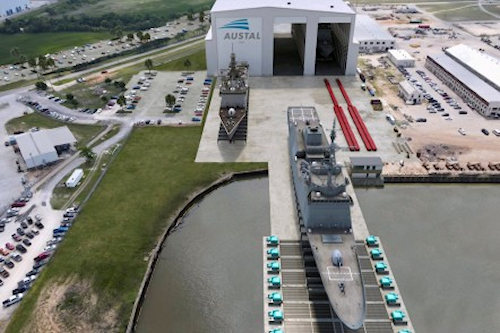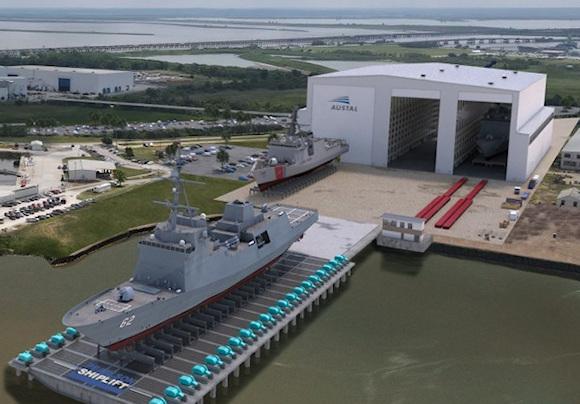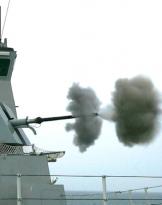The US shipyard AUSTAL USA, located in Alabama, until now dedicated to construction exclusively in aluminum, announced a major expansion of its Mobile yard to enter the more traditional construction sector in steel.
News which in fact overturns the industrial orientation of the shipyard, which has almost become a symbol of multiple welfare schemes as it is a conspicuous and secure electoral base for various US politicians, and known among other things for the controversial construction of the LCS class units Independence and fast class transportation Spearhead.
The plant structure, which includes new covered yards on an area of approximately 18.000 square meters with three spans (approximately the same covered area as the COSTCO shipyard, the largest of the group) will enter the construction phase in the next few months, I would add with the certainly not accidental coinciding with the decisive electoral phase of the current campaign.
The $250 million project overall covers an area of approximately two hectares just south of the existing construction site, on the abandoned site of the former Naval Arsenal Alabama Shipyard.
In AUSTAL USA press release stated that the construction site will be dedicated to the construction of the class of offshore patrol vessels Heritage of the Coast Guard and the new generation T-AGOS-25 ocean surveillance units. The company is currently building class offshore rescue tugs Navajo (T-ATS) and the new LCU-1700 landing craft.

The whole world is a country and politically we cannot fail to observe that the operation, if it can be called industrial, follows the one that led to the disastrous division of the LCS program into two different classes of naval units, even then coinciding with an electoral phase, with the assignment of the monohull order (in steel) to the competing shipyard, namely FINCANTIERI MARINETTE MARINE which is located in Wisconsin. With the same actors, in fact the same over time, AUSTAL's announcement comes while the US Navy is evaluating the opening of a second shipyard for its class frigate program Constellation (FFG-62), for acquisitions at a production rate higher than that of the prime contractor, FINCANTIERI MARINETTE MARINE; among other things, very clearly and inductively as well as inelegantly, in the rendering which accompanies the statement (images), a frigate has been placed Constellation in the foreground, at the center of the new arsenal structure. Perhaps we can see it as a return to a greater engineering logic with more reliable technologies and materials in the naval field, namely steel, certainly a great affirmation of the technical/operational principles that the Italian Navy had immediately established.
It should be remembered that these were immediately proposed to the US Navy which however at the time had opted for the LCS; in a nutshell, certainly a success for the Italian shipbuilding industry and in particular for FINCANTIERI with its versions of the FREMM. Without talking about victories, we can certainly consider it a recognition of the Italian collaboration proposals that were immediately put forward by both the Italian Navy and the Italian shipbuilding industry to focus decisively on a type of multipurpose, ocean-going unit. Despite the now evident errors, many of political origin and of lobbies, which affected the LCS program and, in particular, the materials, time, for once, did not pass in vain and the correction was still timely and valid, when even the most ardent opponents of FINCANTIERI's proposals had to adapt for new US Navy units.
* Naval Engineering Officer of the Italian Navy on leave, during his years of service he was assigned aboard surface units, with different types of engine systems, Diesel, Steam, TAG. Having moved to the national industry, he held positions of responsibility for the construction of the first naval law, becoming promoter of the Italian Naval Exhibitions. He has held managerial positions in both the plant engineering and large-scale construction sectors and in the automotive industry, dealing with production diversification and decarbonisation projects, with the transition to GNV engines.
He has been a member of the boards of directors of some important international JVs in the metallurgical, infrastructure and automotive sectors and has been called to be part of specialist commissions by international organisations, including those relating to disaster management. A journalist registered with the national OdG since 1982, he has collaborated with periodicals and newspapers, and has been managing editor of newspapers, holding top positions in publishing companies. Member of some geopolitical Think Tanks, he collaborates with newspapers especially for correspondence abroad, publishes online in Italian and international maritime and naval sector newspapers. Last but not least, he has published a series of valuable essays on technological and military evolution up to the 2nd World War, in particular of the Royal Navy, published by Academia.edu.
Images: Austal
(article originally published on https://www.ocean4future.org)












